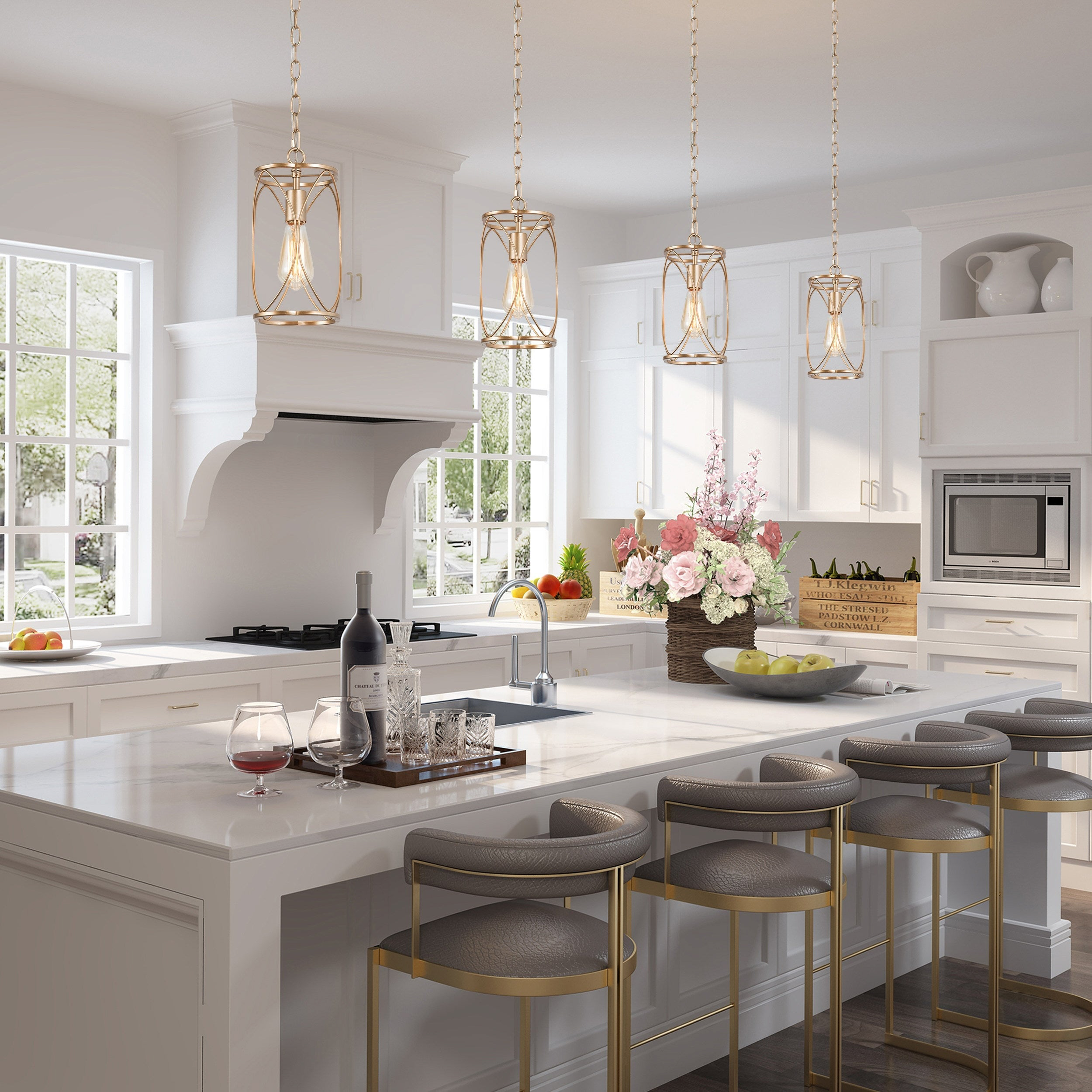Lighting plays a pivotal role in shaping the ambiance of any dining space, influencing not only the aesthetic appeal but also the overall dining experience. The right lighting can transform a simple meal into a memorable occasion, enhancing the flavors of the food and the enjoyment of the company. Warm, inviting light can evoke feelings of comfort and relaxation, making diners feel at ease and encouraging them to linger over their meals.
Conversely, harsh or overly bright lighting can create an unwelcoming atmosphere, detracting from the culinary experience and making it difficult for guests to fully appreciate the nuances of the dishes being served. Thus, understanding the importance of lighting is essential for anyone looking to create an appetizing atmosphere in their dining room. Moreover, the psychological effects of lighting cannot be overstated.
Studies have shown that the color temperature of light can influence our perception of taste and appetite. For instance, warmer tones tend to enhance the appeal of food, making it look more appetizing and inviting. This is particularly important in a dining setting where the goal is to create a pleasurable experience for guests.
Additionally, lighting Sutradecor can be used strategically to highlight certain features of the dining room, such as artwork or architectural details, further enriching the overall atmosphere. By carefully considering the type and placement of lighting fixtures, one can create a harmonious environment that not only complements the food but also elevates the entire dining experience.
Choosing the Right Chandelier for Your Dining Room
Choosing the Perfect Chandelier Size
Selecting the perfect chandelier for your dining room is a decision that requires careful consideration of various factors, including size, style, and functionality. The chandelier serves as a focal point in the room, drawing attention and setting the tone for the entire space. When choosing a chandelier, it is essential to consider the dimensions of your dining table and the overall size of the room. A chandelier that is too large can overwhelm the space, while one that is too small may fail to make an impact.
A general rule of thumb is to choose a chandelier that is approximately one-half to two-thirds the width of your dining table, ensuring a balanced and visually appealing arrangement.
Complementing Your Dining Room Style
In addition to size, the style of the chandelier should complement the existing decor of your dining room. Whether your space is modern, traditional, or eclectic, there are countless chandelier designs available to suit your aesthetic preferences. For instance, a sleek, contemporary chandelier with clean lines may be ideal for a minimalist space, while an ornate crystal chandelier could enhance a more classic or opulent setting.
Considering Materials and Finishes
Furthermore, consider the material and finish of the chandelier; metals like brass or bronze can add warmth and richness, while glass or acrylic options may lend a more airy and light feel. This attention to detail will help you find a chandelier that not only complements your space but also reflects your personal style.
Creating a Welcoming Atmosphere
Ultimately, choosing a chandelier that resonates with your personal style will not only enhance your dining room but also create a welcoming atmosphere for guests.
How a Chandelier Can Enhance Your Dining Experience
A well-chosen chandelier does more than just illuminate a dining room; it can significantly enhance the overall dining experience by creating an inviting and sophisticated atmosphere. The soft glow emitted by a chandelier can set the stage for intimate gatherings or festive celebrations alike. When guests enter a dining space adorned with an elegant chandelier, they are immediately enveloped in an ambiance that suggests warmth and hospitality.
This initial impression can influence their mood and appetite, making them more receptive to enjoying the meal prepared for them. The visual appeal of a stunning chandelier can also serve as a conversation starter, drawing attention and admiration from guests as they settle in for their meal. Furthermore, chandeliers can play a crucial role in defining different zones within an open-concept space.
By strategically placing a chandelier above the dining table, you create a distinct area that signals to guests that it is time to gather and enjoy food together. This separation from other areas of the home fosters a sense of intimacy and connection among diners, encouraging them to engage in meaningful conversations while savoring their meals. Additionally, chandeliers can be paired with other lighting elements to create layers of light that enhance the dining experience even further.
By combining ambient lighting with task lighting from a chandelier, you can achieve a well-balanced illumination that highlights both the food and the company.
Tips for Properly Installing and Maintaining a Dining Room Chandelier
Proper installation of a dining room chandelier is crucial to ensure both safety and aesthetic appeal. Before installation begins, it is essential to determine the appropriate height at which to hang the chandelier. A common guideline is to position it approximately 30 to 36 inches above the dining table, allowing enough clearance for diners while still providing adequate illumination.
Additionally, consider the weight of the chandelier; heavier fixtures may require additional support from ceiling joists or specialized mounting hardware to ensure stability. It is advisable to consult with a professional electrician if you are unsure about any aspect of installation, as they can provide valuable expertise and ensure compliance with local building codes. Once installed, maintaining your chandelier is key to preserving its beauty and functionality over time.
Regular cleaning is essential to prevent dust and grime from accumulating on its surfaces, which can dull its shine and diminish its overall impact. Depending on the material of your chandelier—be it crystal, glass, or metal—different cleaning methods may be required. For crystal chandeliers, using a soft cloth and a mixture of water and vinegar can help restore their brilliance without causing damage.
For metal fixtures, gentle polishing with appropriate cleaners will keep them looking their best. Additionally, periodically checking for loose bulbs or wiring issues will help ensure that your chandelier remains safe and functional for years to come.
Using Dimmers to Control the Ambiance
Incorporating dimmers into your dining room lighting scheme can significantly enhance the versatility and ambiance of your space. Dimmers allow you to adjust the brightness of your chandelier according to different occasions and moods, providing flexibility that static lighting cannot offer. For instance, during casual family dinners or brunches, you may prefer brighter lighting that facilitates conversation and activity in the room.
Conversely, for more formal gatherings or romantic dinners, lowering the light levels can create an intimate atmosphere that encourages relaxation and connection among diners. This ability to control brightness not only enhances comfort but also allows you to tailor the environment to suit various occasions. Moreover, dimmers can contribute to energy efficiency in your home by reducing electricity consumption when full brightness is unnecessary.
By lowering the intensity of your chandelier’s light output during less formal occasions or when entertaining smaller groups, you can extend bulb life while also reducing energy costs. Additionally, many modern dimmer switches come equipped with smart technology features that allow you to control lighting remotely via smartphone apps or voice commands. This level of convenience adds another layer of sophistication to your dining experience, enabling you to set the perfect mood with just a few taps on your device.
Incorporating Other Lighting Elements with Your Chandelier
Adding Ambient Light with Wall Sconces
Wall sconces are an excellent addition that can provide ambient light while adding visual interest to your walls. Placing sconces at eye level on either side of your dining room will create a warm glow that complements the chandelier’s illumination without overpowering it.
Accentuating with LED Strip Lights and Pendant Fixtures
In addition to wall sconces, consider incorporating accent lighting such as LED strip lights or pendant fixtures that draw attention to specific areas within your dining room. For example, placing LED strips along shelves or under cabinets can highlight decorative items or artwork while providing subtle illumination that enhances the overall ambiance.
Creating Visual Intrigue with Pendant Lights
Pendant lights hung at varying heights above side tables or buffets can also add visual intrigue while ensuring adequate lighting for food preparation or serving areas. By thoughtfully combining these various lighting elements with your chandelier, you can create an inviting atmosphere that caters to both functionality and style.
How to Coordinate Your Chandelier with Your Dining Room Decor
Coordinating your chandelier with your dining room decor is essential for achieving a cohesive look that reflects your personal style while enhancing the overall aesthetic of the space. Start by considering the color palette of your dining room; selecting a chandelier that complements or contrasts harmoniously with existing colors can create visual interest without overwhelming the space. For instance, if your decor features warm earth tones, opting for a chandelier in brass or bronze finishes can enhance this warmth while adding an elegant touch.
Additionally, consider how the design elements of your chandelier align with other furnishings in your dining room. If you have rustic wooden furniture or farmhouse-style decor, a wrought iron or wooden chandelier may be an ideal choice that ties everything together seamlessly. Conversely, if your decor leans towards modern minimalism with sleek lines and neutral colors, a contemporary glass or metal chandelier could serve as a striking focal point without clashing with other elements in the room.
Ultimately, achieving harmony between your chandelier and dining room decor will elevate both aspects while creating an inviting environment for all who gather around your table.





